|
|
|
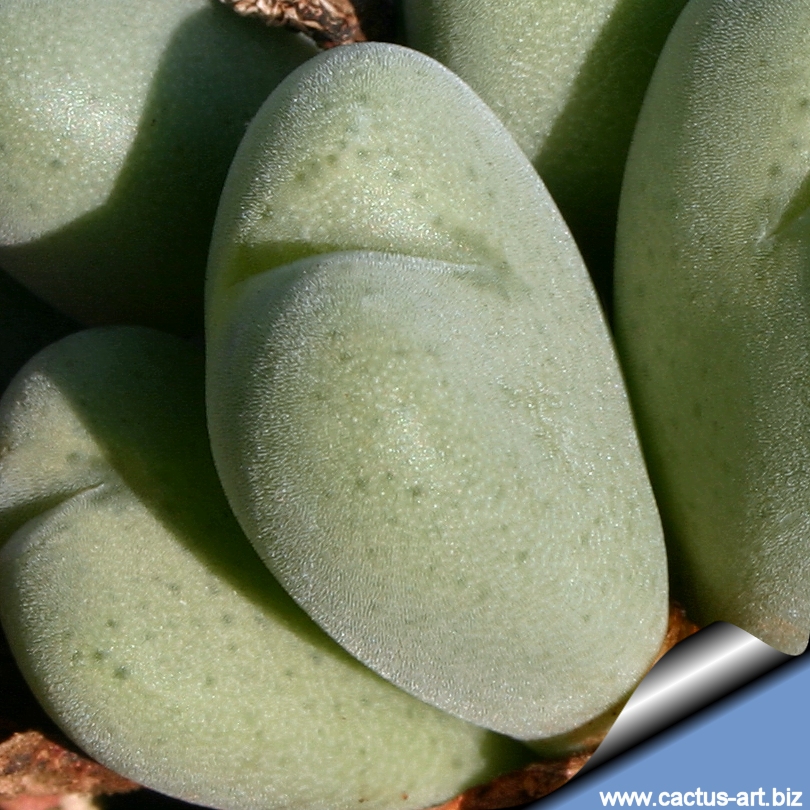
The name Latin name "velutinum" means "velvety" for the fine hoar on the
plants bodies.
|
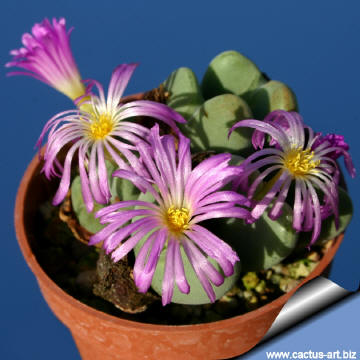 |
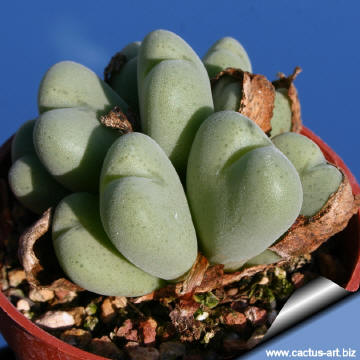 |
|
. |
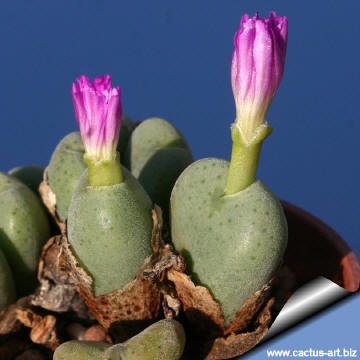 |
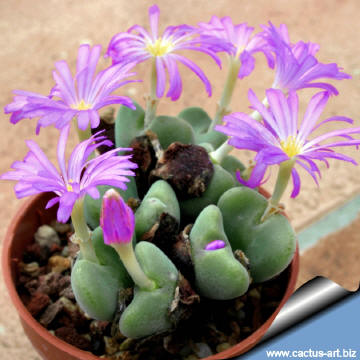 |
|
. |
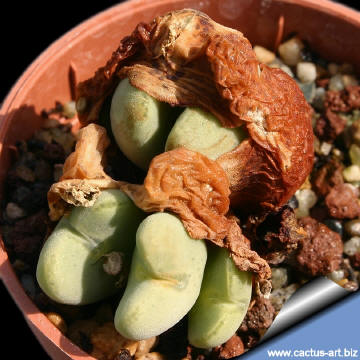 |
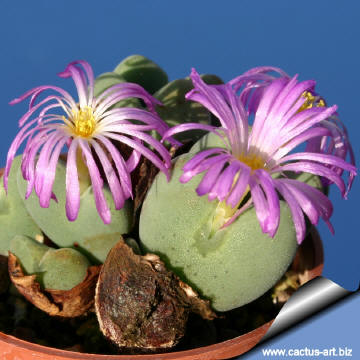 |
|
CONOPHYTUMS: Plants of the genus
Conophytum are also known as 'living pebbles'. During
the rest period (the summer months in Europe) a new body forms inside
the old, gradually taking all the substances from it until all that
remains is the skin, which dries and protects the young plant from the
heat of the sun and excess evaporation of water. The resting Conophytum
protected by this dry cover resembles a pebble and hence the name
'living pebble'. The growth period of most species is from August to
March. The temperature should be about 10 to 12°C
Advertising
|
|
|
|
|
|
|
Family: Mesebrianthemaceae (Aizoaceae)
Scientific name: Conophytum
velutinum Schwantes
In: Moll. Deutsche
Gärtner- Zeit., vol. 42, p. 139 1927
BILOBA GROUP (This is
another example of a species in the section Biloba with pink flowers)
Origin:
South Africa (Northern Cape, Little Namaqualand)
Habitat: Growing in a well drained
soil with some water in winter and some sun.
Synonyms:
- Conophytum
cinereo-viride
- Conophytum
craterulum
- Conophytum tischeri
- Conophytum velutinum
var. craterulum
|
|
Description: Richly branched
species closely relatated to the
C. bilobum but with pink-violet blooms. This would appear to
be very similar in form and size to
C. cordatum.
Bodies: About 1 cm in dieter cordate (heart-shaped) in outline.
Greysh-green, velvety or appearance.
Flower: Petals spreading, light violet to magenta.
Blooming season: The flowers are autumnal and
diurnal.
|
|
|
|
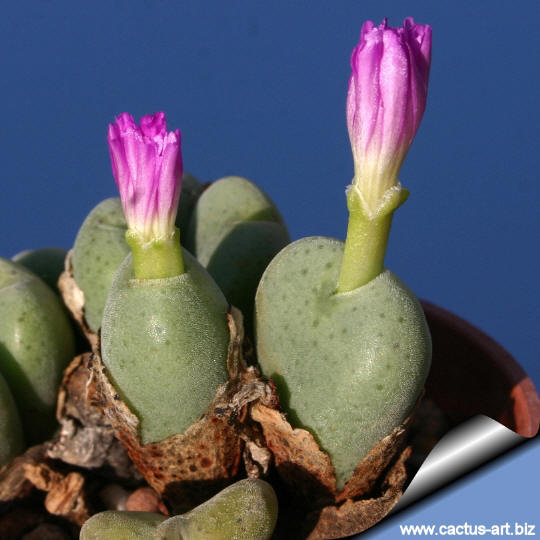
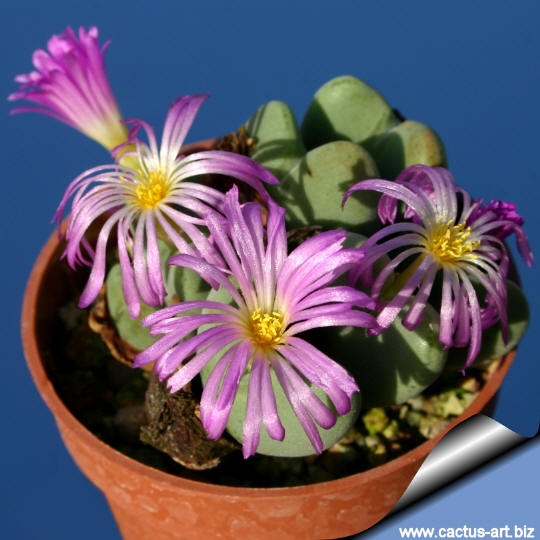
Cultivation: All the forms
of C. velutinum are easy to grow. These plants grow on
winter rain and head for summer dormancy. They require little water;
otherwise its epidermis breaks (resulting in unsightly scars). Water
minimally in summer, (only when the plant starts shrivelling), but it
will generally grow even in summer if given water. Water regularly in
winter after the previous year's leaves have dried up. Requires good
drainage. Keep cool and shaded in summer, it needs full sun or light
shade. Hardy to -2°C. Ensure a very good ventilation. Avoid to repot
frequently. This plant may stay in the same pot for many years.
Propagation: It can be
reproduced both by cuttings and seeds. Take the cutting from a grown-up
mother plant. Each
cutting must contain one or more heads along with
a fraction of root.


|
|